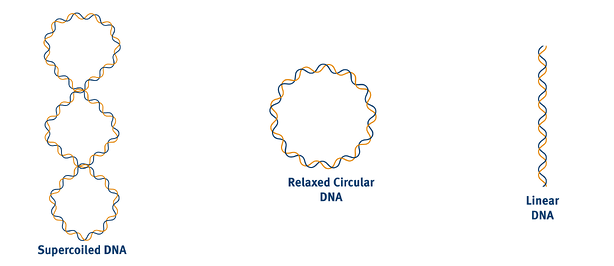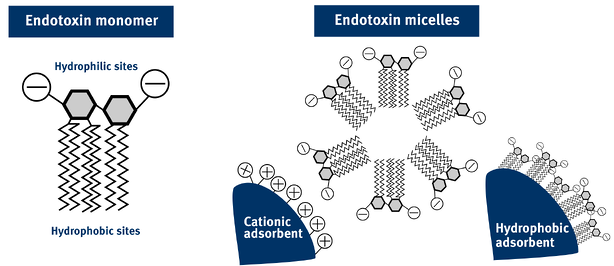Successful transient transfection relies on many factors, starting with a successful plasmid prep. To ensure high transfection efficiency, resulting DNA from your plasmid preps must be transfection grade. But what does transfection grade really mean?
Well, transfection grade refers to a couple of characteristics of the plasmid itself, namely the topology of the construct, the quality of the plasmid DNA, and endotoxin levels. Here, I'll break down each requirement to help you better understand what makes a plasmid prep successful.
Topology
Topology refers to the geometric and spacial properties of the DNA, specifically whether it’s linear, relaxed circular, or supercoiled. Transient transfection is known to be more efficient with highly supercoiled DNA compared to linear DNA. In a study done on the influence of topology on transfection efficiency, researchers at Ghent University determined that supercoiled DNA is better suited to reach the perinuclear region of the cell than either linear DNA or relaxed circular DNA, which greatly increases transfection efficiency. Also, linear DNA is vulnerable to exonucleases, causing fragments to quickly degrade, where circular DNA is not.

Purity
Purity (and quality) is key for efficient transfection, with the best results being achieved from highly pure DNA that is free from contaminants. Contaminants like phenol, EDTA, salts, etc can affect cell stability as well as cause issues during transfection. Non-specific nucleic acids are another major contaminant that impacts downstream processing. Contaminants can be measured using a A260/A280 and/or A260/A230 ratio. Another common purity issue in plasmid prep comes from overgrown cultures. These preps result in lower yields, as well as lower concentrations, of plasmid due to increased cell-borne contaminants in the lysate, which competes with plasmid for binding sites on purification resins. This can also lead to higher endotoxin levels in the plasmid sample.
Endotoxin
Endotoxins, also known as lipopolysaccharides or LPS, are cell membrane components that are released during the lysis of a cell. Endotoxins have a unique chemical structure, including both hydrophilic and hydrophobic regions, as well as charged regions. This makes endotoxins likely to form micelle structures. A micelle structure is an aggregate of phospholipid molecules, and while they have a variety of different properties, endotoxin micellar structures notably have a negative charge, causing them to compete with DNA molecules as transfection reagents. This competition decreases the efficiency of your transfection.

Schematic diagram of adsorption behavior of endotoxin aggregates for biomaterials (Based on Hirayama C, Sakata M. Chromatographic removal of endotoxin from protein solutions by polymer particles. J Chromatogr B
2002;781:419–32
Chromatography Chemistry
Another piece of the puzzle in achieving transfection-grade plasmids is the type of chromatography chemistry being used to purify your samples. Ion exchange chromatography is considered the gold standard for producing transfection-grade plasmids. This is due to its high binding capacity, high selectivity, near 100% recovery, and extremely low endotoxin levels. When searching for DNA purification systems, it is important to select ion-exchange resin-based plasmid purification.
When you are able to consistently, and reliably get all of these requirements in each plasmid prep, you'll have much more success with your transient transfection.
To learn more about how to automate your plasmid prep process and obtain reliable transfection-grade DNA, click on the button below.

 Organic Workflow
Organic Workflow Peptide Workflow
Peptide Workflow Scale-Up Flash Purification
Scale-Up Flash Purification  Sample Preparation
Sample Preparation Biomolecule Purification
Biomolecule Purification Oligo synthesis
Oligo synthesis Scavengers and Reagents
Scavengers and Reagents Service & Support
Service & Support Accessories & Spare parts
Accessories & Spare parts Investors
Investors Reports & News
Reports & News The Share
The Share Corporate Governance
Corporate Governance Calendar
Calendar Sustainability
Sustainability Our Offering
Our Offering Our History
Our History Our Locations
Our Locations Leadership
Leadership